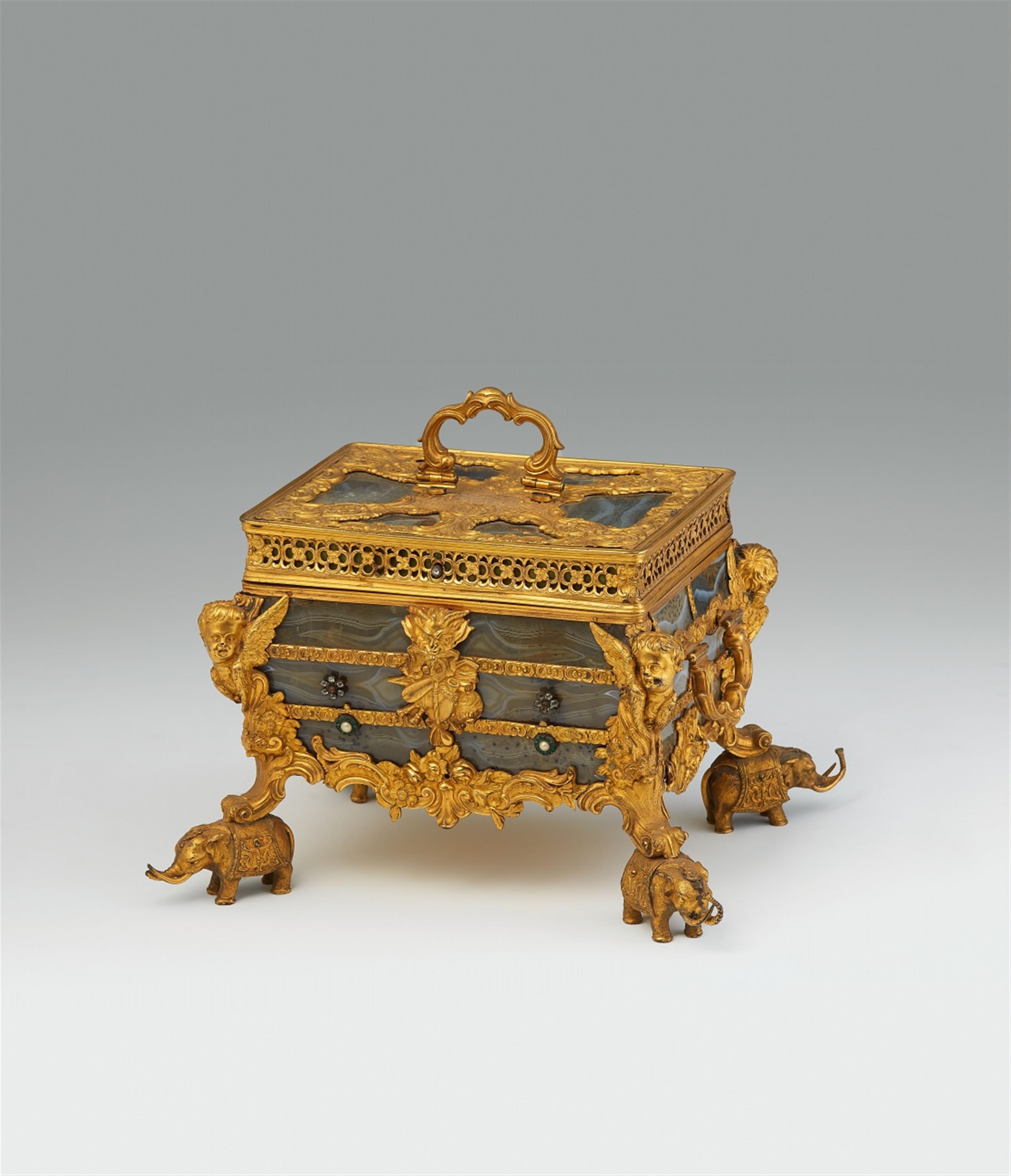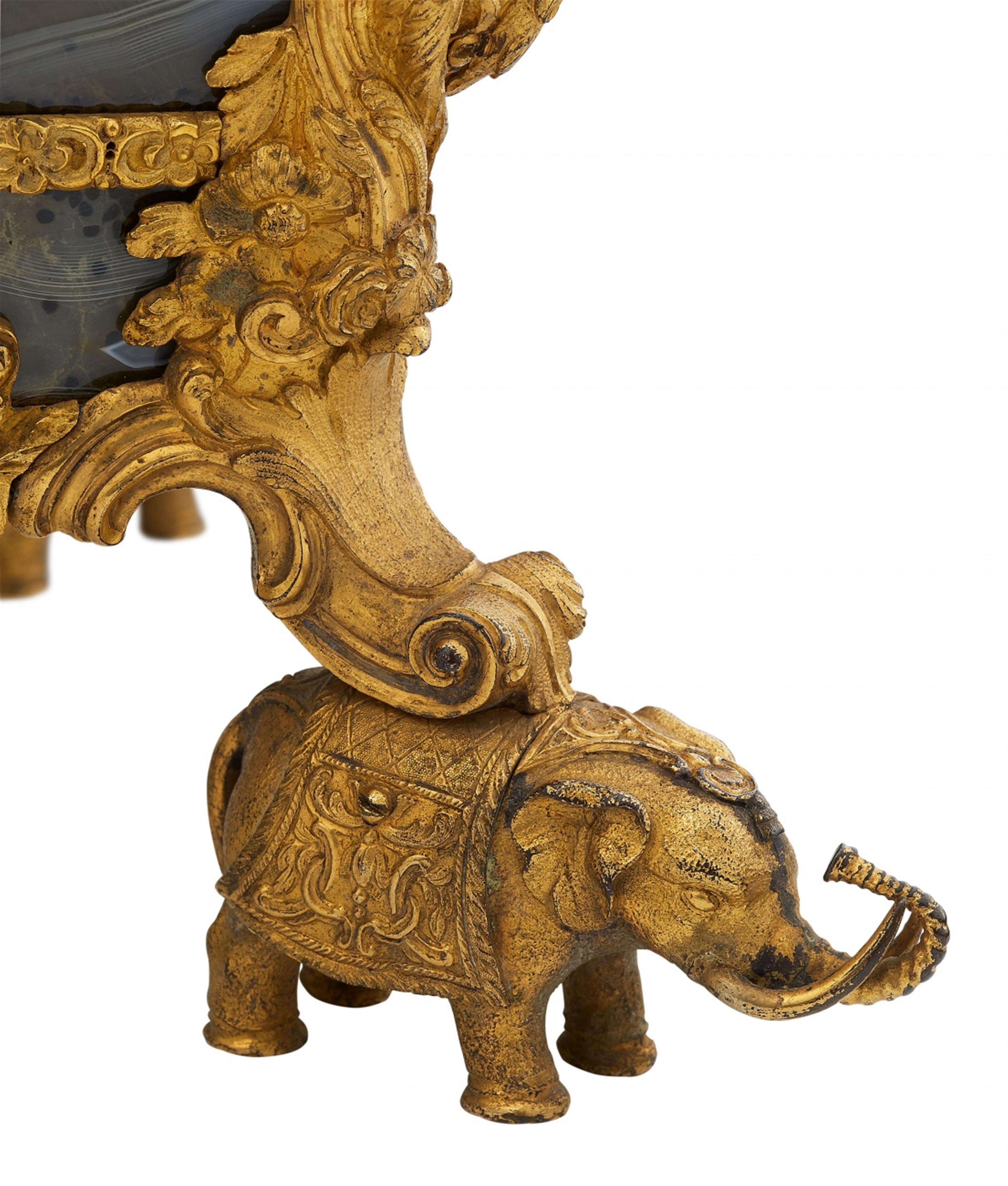A sumptuous English agate coffer
Bombé form box with hinged lid and three handles resting on four elephant model supports. Decorated on five sides with grey banded agate veneer set in moulded rocaille ormolu mountings. The upper angles with winged angel's head appliques, horned mascarons holding trophies to front and back, set with two small pearls and glass paste stones. Engraved C3 to the inside front edge. The trunk of the front left elephant partially broken, a small piece missing from the agate veneer of the upper left side. H 15.8, W 24.5, D 19 cm.
Attributed to James Cox, the bronzes attributed to Charles Magniac, circa 1760.
The London-based jeweller, goldsmith, and businessman James Cox (1723 - 1800) was famous for his mechanical clocks, including Cox's timepiece (driven by atmospheric pressure) and the life-sized peacock automaton kept in the Hermitage in St Petersburg. Cox was not only a watchmaker and mechanic, but also an inventor. He designed clocks with perpetual motors despite only having trained as a jeweller and goldsmith, never as a watchmaker. Although he produced many of his own designs himself, he commissioned other specialist craftsmen for his more complicated inventions using several different materials. His designs include sumptuous necessaires, snuffboxes, and coffers, often made from agate plaques set in ormolu or gold. These luxury articles could also be incorporated into larger ensembles, frequently combined with clockworks or musical mechanisms. He often re-used the same design, such as that of this box, in various settings.
Provenance
Acquired from Christie´s London, 15th June 1976, lot 192.
Literature
Cf. Goodison, Ormolu: The Work of Matthew Boulton, London 1974, he describes how Matthew Boulton recalled "Mr. Charles Magniac, No 1 Crown Court, Old Change, Near St. Pauls, is a fine designer, modeller and chaser; he designs all for Cox in Shoe Lane". He also mentions that Boulton suspected Magniac to be responsible for most, if not all, of the ormolu mountings for Cox's works (p. 21).




